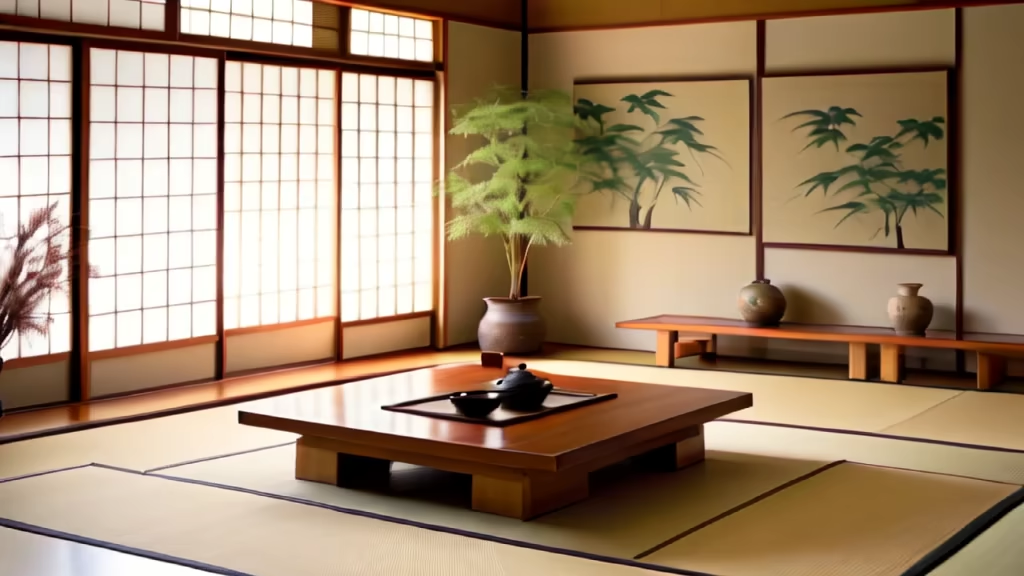Prompt: In this Japanese-inspired living room, tranquility and simplicity converge to create a space that embodies the timeless principles of Zen aesthetics. The design is characterized by clean lines, natural materials, and a mindful arrangement of elements to foster a sense of harmony. The focal point of the room is a low-profile seating area with plush tatami mats or soft, neutral-toned rugs. A low wooden table, often made from sustainable materials like bamboo or reclaimed wood, sits at the center, offering a platform for tea ceremonies or contemplative activities. Floor cushions or zaisu chairs provide comfortable and flexible seating options, encouraging a relaxed and informal atmosphere. Large shoji screens with translucent paper panels serve as both windows and room dividers, allowing soft, diffused light to permeate the space. The screens may offer glimpses of a Japanese garden or natural landscape, connecting the interior with the outdoors. Bamboo blinds can be adjusted to control the level of natural light and provide a sense of privacy. Minimalist built-in shelving or alcoves display carefully curated items such as bonsai trees, ikebana arrangements, or pottery, contributing to the overall aesthetic. The color palette is muted and earthy, featuring soft hues inspired by nature, such as beige, taupe, and muted greens. A tokonoma, a recessed alcove often adorned with a scroll painting (kakemono) or a seasonal flower arrangement (ikebana), serves as a focal point for contemplation and appreciation of beauty. Warm, ambient lighting, perhaps from floor lamps with rice paper shades or pendant lights with subtle designs, enhances the serene atmosphere. This Japanese-inspired living room embodies a mindful approach to design, offering a serene and uncluttered space that encourages relaxation, contemplation, and a deep appreciation for the beauty of simplicity.

